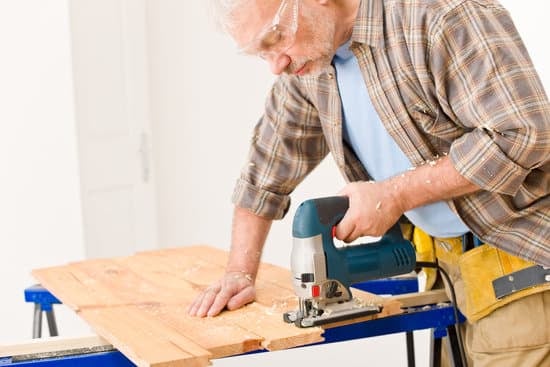Do I need receipts for home improvements basis? Home improvement projects can add significant value to your property, but the importance of keeping receipts for these endeavors is often overlooked. Whether you are making small repairs or major renovations, proper documentation of expenses is essential. In this article, we will explore the significance of retaining receipts for home improvements and the potential legal, insurance, and financial implications of not doing so.
When it comes to home improvements, having receipts serves as critical evidence of the work completed and the materials used. This documentation becomes especially vital when selling your property or filing an insurance claim in case of damages or accidents related to the home improvements. Without receipts, you may encounter difficulties proving the quality and value of the work done, which could impact your ability to recoup costs or negotiate a fair sale price.
In addition to providing proof of expenses, certain home improvement projects may also qualify for tax deductions or credits. Without proper documentation in the form of receipts and invoices, you could miss out on potential tax benefits.
Moreover, failing to keep track of receipts may put you at risk if any disputes arise with contractors or service providers regarding payment or warranty claims. In the following sections, we will delve into more details about why keeping track of receipts is crucial and discuss how homeowners can properly organize and store these documents.
What Types of Home Improvements Typically Require Receipts
When it comes to home improvements, there are certain types of projects that typically require receipts for documentation and proof of payment. Whether you are making small upgrades or major renovations, having receipts can be essential for various reasons including insurance claims, tax purposes, and legal requirements.
Major Renovations and Remodeling
Any major renovation or remodeling project such as a kitchen remodel, bathroom renovation, or room addition typically requires receipts for materials, labor, and permits. These types of home improvements involve significant investments and having receipts can provide evidence of the expenses incurred in case they are needed for insurance claims or legal disputes.
Structural Upgrades and Repairs
Home improvements that involve structural upgrades or repairs also usually require receipts. This may include foundation repairs, roof replacements, window installations, or HVAC system upgrades. Receipts not only serve as proof of payment but also provide details about the materials used and the contractors hired for the project.
Eco-Friendly and Energy-Efficient Upgrades
For homeowners who have invested in eco-friendly and energy-efficient upgrades such as solar panels, energy-efficient windows, insulation installations, or smart home technology, keeping receipts is crucial. These types of improvements may qualify for tax credits or rebates in some cases, and having receipts is essential to support these claims.
By keeping detailed receipts for these types of home improvements, homeowners can ensure that they have proper documentation in case it is needed for insurance claims, tax purposes, warranty issues, or potential legal disputes. Having thorough records can provide peace of mind and protect homeowners from potential headaches down the road.
Legal and Insurance Implications of Not Having Receipts for Home Improvements
When it comes to home improvements, many homeowners may wonder about the legal and insurance implications of not having receipts for their projects. The reality is that maintaining a record of receipts for home improvements is crucial from both a legal and insurance standpoint.
Lack of Proof of Ownership and Value
One of the main legal implications of not having receipts for home improvements is the lack of proof of ownership and value. In the event of a dispute or claim, such as during a property appraisal or insurance assessment, having receipts can demonstrate the investment made into the property and its increased value due to the improvements. Without receipts, homeowners may struggle to prove ownership or recoup the full value of their investments.
Insurance Coverage Disputes
Additionally, not having receipts for home improvements can lead to disputes with insurance companies in the event of property damage or loss. Insurance claims for damaged or stolen items may require proof of ownership and value, which can be difficult to provide without proper documentation. This can result in denial or reduced coverage for homeowners who cannot substantiate their claims with receipts.
Legal Requirements and Building Codes
From a legal perspective, some home improvements may need to comply with building codes and regulations. Without receipts documenting professional installation, materials used, and permits obtained, homeowners may face legal repercussions if their improvements are found to be non-compliant with local laws. This could result in fines, required modifications, or even legal action against the homeowner.
How to Properly Document and Store Receipts for Home Improvements
When it comes to home improvements, proper documentation is essential for a variety of reasons. Whether it’s for legal, insurance, or tax purposes, having receipts for home improvements can provide crucial evidence of the work that has been done on your property. But how should you go about documenting and storing these receipts?
First and foremost, it’s important to keep all receipts related to home improvements in a safe and organized manner. This could be in the form of a physical filing system or a digital one, such as scanning and saving receipts on your computer or in a cloud-based storage service. Whichever method you choose, make sure it’s easily accessible and that you can quickly locate specific receipts when needed.
In addition to keeping the original receipts, consider creating a spreadsheet or document that lists all the details of each home improvement project. This can include the date of the improvement, the name of the contractor or supplier, the cost of the project, and any other pertinent information. By doing so, you have an additional layer of organization and oversight for your home improvement expenses.
Properly documenting and storing receipts for home improvements not only provides peace of mind but also ensures that you are prepared for any potential legal disputes, insurance claims, or tax audits in the future. It may seem like an extra step at the time of renovation or repair, but it can save you a lot of headache down the road.
| Importance | Considerations |
|---|---|
| Crucial evidence | Legal disputes |
| Organized manner | Digital storage |
| List details in a document/spreadsheet | Peace of mind |
Tips for Tracking and Organizing Home Improvement Receipts
When it comes to home improvements, keeping track of receipts is crucial for a variety of reasons. Not only can organized receipts help with budgeting and future maintenance, but they are also important for legal and insurance purposes. Here are some tips for tracking and organizing home improvement receipts:
- Designate a specific folder or binder for all home improvement receipts
- Create digital copies of all receipts and store them in a secure cloud storage or email account
- Label each receipt with the date, type of improvement, and vendor information
- Use a spreadsheet or software to keep an organized record of all home improvement expenses
- Regularly review and update your receipt organization system to ensure nothing is missed
Properly documenting and storing receipts for home improvements not only helps in case of warranty claims or potential resale of the property but it also gives homeowners peace of mind knowing that their investment in their property is accounted for.
Additionally, keeping track of and organizing home improvement receipts can also aid in potential tax benefits. Whether it’s deducting eligible expenses on annual tax returns or providing evidence of capital improvements when selling the property, having organized records can save time and frustration when dealing with tax implications related to home improvements. Overall, taking the time to track and organize home improvement receipts can have significant long-term benefits for homeowners.
How to Navigate the Tax Implications of Home Improvements Without Receipts
When it comes to navigating the tax implications of home improvements without receipts, homeowners may find themselves in a tricky situation. The Internal Revenue Service (IRS) typically requires documentation to support any claims for tax deductions related to home improvements. Without receipts, it can be challenging to prove that the expenses were legitimate and eligible for tax benefits.
One option for homeowners without receipts is to look for alternative forms of documentation. This could include bank statements showing withdrawals or checks written for home improvement expenses, credit card statements reflecting relevant purchases, or contractor invoices. While this may not be as ideal as having original receipts, it can still provide some evidence of the expenses incurred.
Another approach for homeowners without receipts is to leverage other sources of information to support their claims. This could involve gathering before-and-after photos of the home improvements, obtaining written estimates or quotes from contractors, and compiling any other relevant documentation that can help substantiate the costs and nature of the work done.
In some cases, homeowners may need to consult with a tax professional or accountant to determine how best to proceed when facing tax implications without receipts for home improvements. These experts can provide guidance on what forms of documentation may be acceptable substitutes and how to navigate the process of claiming deductions without traditional receipts. Additionally, they can offer advice on mitigating any potential audit risks associated with lacking proper documentation for home improvement expenses on tax returns.
Potential Consequences of Not Having Receipts for Home Improvements
Not having receipts for home improvements can have significant consequences for homeowners. Without proper documentation, it can be challenging to prove the cost and quality of the work done on your property, leading to potential legal and insurance issues. Here are some potential consequences of not having receipts for home improvements:
1. Insurance Claims: In the event of damage or a claim related to the home improvement project, not having receipts can make it difficult to substantiate the value of the work that was done. This could result in a lower payout from your insurance company or even a denial of your claim altogether.
2. Resale Value: When selling your home, potential buyers often look for evidence of home improvement projects and may request receipts as proof of the work that has been done. Without this documentation, you may have trouble proving the value added by these improvements, potentially decreasing the resale value of your home.
3. Legal Disputes: In cases where there are disagreements with contractors or service providers regarding the scope or cost of work performed, having receipts is crucial evidence to support your claims. Not having receipts could weaken your position in any legal disputes that arise.
To avoid these potential consequences, it’s essential for homeowners to keep thorough records and documentation for all home improvement projects, including obtaining and retaining receipts for materials and services rendered.
Here are some tips for tracking and organizing home improvement receipts:
Remembering these tips will help homeowners stay organized and prepared in case they need to provide proof of their home improvements in the future.
Case Studies and Examples of the Impact of Having or Not Having Receipts for Home Improvements
Homeowners often wonder, “Do I need receipts for home improvements?” The answer is a resounding yes. Proper documentation is crucial when it comes to home improvements, as it serves as proof of purchase, warranty validation, and can even be essential for legal and insurance purposes. Without receipts, homeowners may face serious consequences that can significantly impact their investment in their property.
When it comes to major home improvements such as kitchen renovations, bathroom remodels, or roof replacements, receipts are especially important. These types of projects typically involve significant expenditures and require the expertise of professionals. In the event of any issues or disputes with contractors or suppliers, having receipts can provide evidence of the work done and materials purchased. Additionally, when selling a home, potential buyers often look for documentation of past improvements as part of their due diligence process.
From a legal perspective, not having receipts for home improvements can lead to challenges in proving ownership or the quality of work performed. In the unfortunate event of damage or accidents related to past improvements, lack of documentation can make it difficult for homeowners to seek compensation from insurance companies or pursue legal action against responsible parties.
In terms of navigating tax implications without receipts for home improvements, homeowners may face difficulties in claiming deductions or credits related to the cost of improvements. Without proper documentation, they may not be able to maximize their tax benefits and could potentially face audits by tax authorities. It is clear that having receipts for home improvements is crucial for ensuring financial security and peace of mind for homeowners.
Conclusion and Recommendations for Homeowners Regarding Receipts for Home Improvements
In conclusion, the importance of receipts for home improvements cannot be overstated. These documents provide proof of purchase, evidence of work completed, and can protect homeowners in the event of legal or insurance issues. It is crucial for homeowners to understand the potential consequences of not having receipts for home improvements, as it can lead to complications with taxes, insurance claims, and future property sales.
It is recommended that homeowners keep a detailed record of all home improvement receipts, including materials and labor costs. This documentation should be organized in a secure and easily accessible manner, such as in a digital folder or physical file. By properly documenting and storing receipts for home improvements, homeowners can protect themselves from potential disputes with contractors, insurance companies, or tax authorities.
Furthermore, homeowners should take proactive steps to track and organize their home improvement receipts on an ongoing basis. This can include creating a system for categorizing expenses, entering information into a spreadsheet or accounting software, and regularly reconciling receipts with bank statements.
By staying organized and up-to-date with their receipts for home improvements, homeowners can mitigate the risk of facing financial or legal challenges down the line. Therefore, it is essential to maintain accurate records of all home improvement expenses, therefore prioritizing keeping track of such records is crucial.
Frequently Asked Questions
Can I Claim Home Improvements Without Receipts?
It is possible to claim home improvements on your taxes without receipts, but it is not advisable. Without receipts, it can be difficult to prove the cost and nature of the improvement to the IRS if you are audited.
Should You Keep Home Improvement Receipts?
Keeping home improvement receipts is highly recommended. Receipts serve as proof of the cost and nature of the improvements made to your home. This documentation can help you accurately report these expenses to the IRS and provide evidence in case of an audit.
How Do You Prove Home Improvement to the IRS?
To prove home improvements to the IRS, it’s important to keep detailed records such as receipts, contracts, and invoices. These documents should clearly show the costs, dates, and descriptions of the improvements made. Having thorough documentation can help support your claims in case of any inquiries from the IRS.

I’m thrilled to have you here as a part of the Remodeling Top community. This is where my journey as an architect and remodeling enthusiast intersects with your passion for transforming houses into dream homes.





